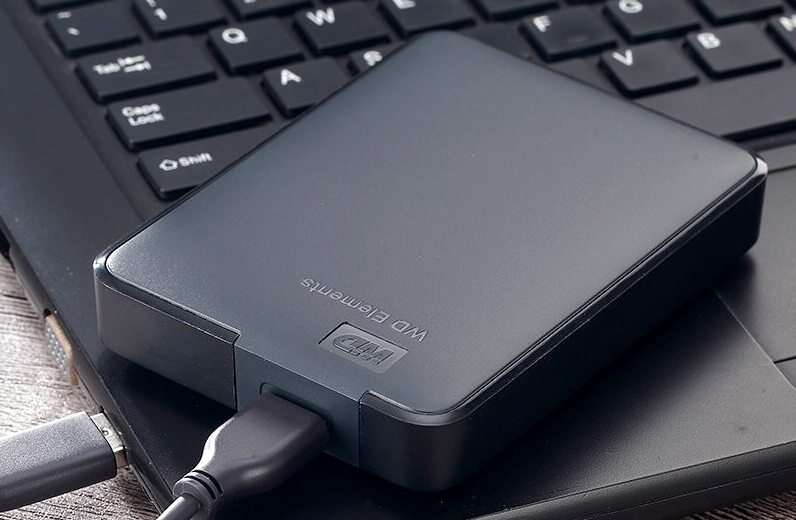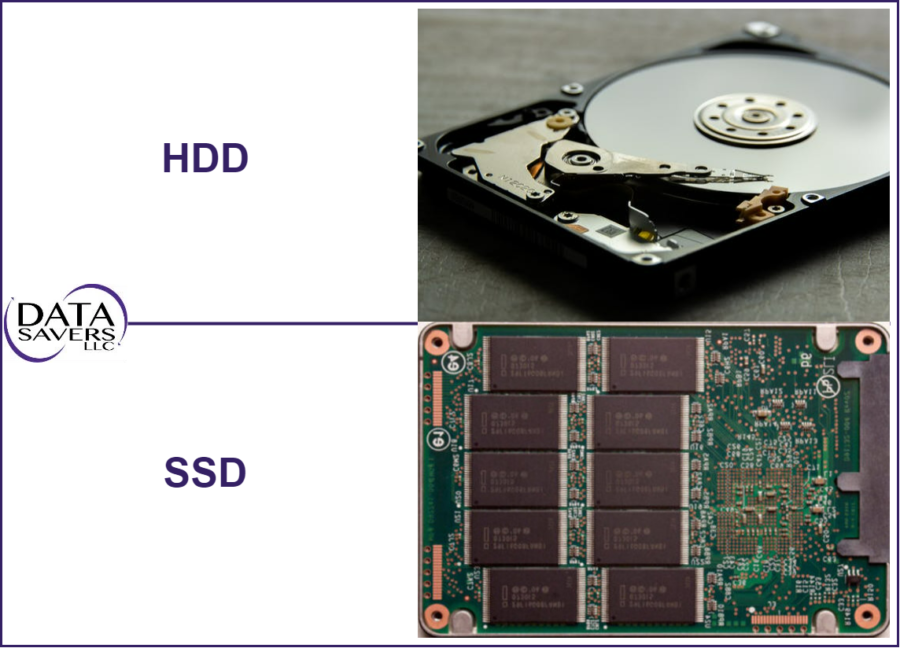Have you ever wondered why the information on your computer is still there after you turn the computer off? Unless you’re using a custom machine, your computer stores data on a hard drive. If you’re interested in learning more about types of hard drives, then you’re in the right place!
HDD & SSD
Hard drives are one of the most widely used electronic data storage devices. While flash drives and SD cards are popular portable data storage technology, hard drives have virtually no competition as the main storage device for laptops and desktops. There are two primary varieties for hard drives, hard disk drives (HDD) and solid state drives (SSD). The remainder of this piece will focus on similarities and differences between HDDs and SSDs.

Types of Hard Drives – HDD & SSD
Hard disk drives (HDD) and solid state drives (SSD) are two types of hard drive that have achieved widespread use. Hard disk drives offer better value in terms of storage capacity (GB / $) and were popularized years before solid state drives began seeing significant adoption. Solid state drives offer greater durability and performance for consumers or organizations willing to pay more per gigabyte.
The following image combines photos of the internal components in hard disk drives (HDD) and solid state drives (SSD). The hard disk drive offers a clear view of the actuator arm and platter(s). The solid state drive demonstrates what a NAND flash storage chip looks like. The remainder of this article will describe the components and functionality of hard disk drives and solid state drives. While this is difficult with topics such as NAND flash, this article will attempt to use appropriate language for individuals who don’t have a background in electrical engineering or computer science.

What is a Hard Disk Drive? – Types of Hard Drives
Hard disk drives are the device responsible for displacing floppy disks. While solid state drives had been invented well before this happened, solid state technology was still prohibitively expensive whereas HDDs were a realistic purchase for the average consumer. While the floppy disk derived its name from the device’s flexibility, the hard disk drive was named for it’s rigidity. Hard disk drives rely on a number of major components for operation.
Hard Disk Drive Components
Platter(s) are rotating disk(s) responsible for storing data. The read-write heads are aptly named, they read and write data. Read-write heads communicate with the platters through electromagnetic signals. The actuator arm moves the read write heads. The spindle motor is responsible for spinning the platter(s) at speeds measured in rotations per minute (RPM).
How Does a Hard Disk Drive Work?
These components work together to store and retrieve all the data your computer writes in or reads from storage. When you save a file to a hard disk drive, the file travels from the motherboard to the hard drive via SATA, NVMe, or an alternative cable / interface. Next, the hard drive converts human-readable information such as word documents, spreadsheets, or PowerPoint presentations into binary data (1s and 0s). The binary form of your data is transmitted by the read-write heads to the platter(s). Each platter contains millions of miniscule magnetic fields to denote 1s and 0s. Reading data from a hard disk drive is essentially the inverse process.
What is a Solid State Drive? – Types of Hard Drives
Solid state drives are a popular data storage solution for individuals who regularly need to transport their laptop or external hard drive, depend on the fastest possible data retrieval, and those who don’t mind spending more to achieve these benefits. While a solid state drive will still be more expensive than an equivalent hard disk drive, the price for SSDs has declined steadily over time. In 1991, a single gigabyte of solid state memory cost $50,000 USD. In 2020, one gigabyte of solid state memory cost around $0.10 USD. That’s a $49,999.90 reduction in the cost per gigabyte for solid state storage. With drives that are arguably superior to hard disk drives, it is hardly surprising that many consumers are purchasing solid state drives instead of hard disk drives.
Solid State Drive Components
Whereas hard disk drives rely on moving parts, solid state drives have components that are fixed in place. Solid state drives rely on NAND flash chips to hold your data. If you refer to the photo at the beginning of this piece, you will see that the solid state drive has ten clearly visible black chips attached to a printed circuit board (PCB). These NAND flash chips are the same storage technology used in mobile phones, SD cards, and USB flash drives.
How Does a Solid State Drive Work?
It is difficult providing a (pseudo) technical definition of NAND flash that is still “layman’s terms”, but we will try. NAND flash storage devices are made up of blocks that are arranged in arrays. Blocks are the smallest entity in the NAND device that can be erased. Bytes are the smallest entity on the device that can be programmed and changing bytes from 0 to 1 writes data to NAND flash storage. When you save a file to a SSD, the file travels from the motherboard to the SSD by SATA, NVMe, or a similar cable / interface. The file is converted into binary data that written to NAND flash.
